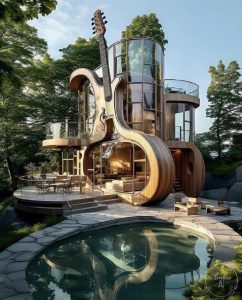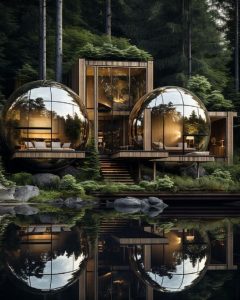Step into a realm where architecture becomes art, and homes are not just structures but masterpieces of design. Houses with unique modern geometric designs are redefining the landscape of residential architecture, introducing a captivating blend of innovation and elegance. In this exploration, we delve into the allure of these geometric marvels, unraveling the design principles, practical benefits, and how homeowners can infuse their spaces with geometric sophistication.
1. Architectural Symmetry: The Essence of Geometric Designs
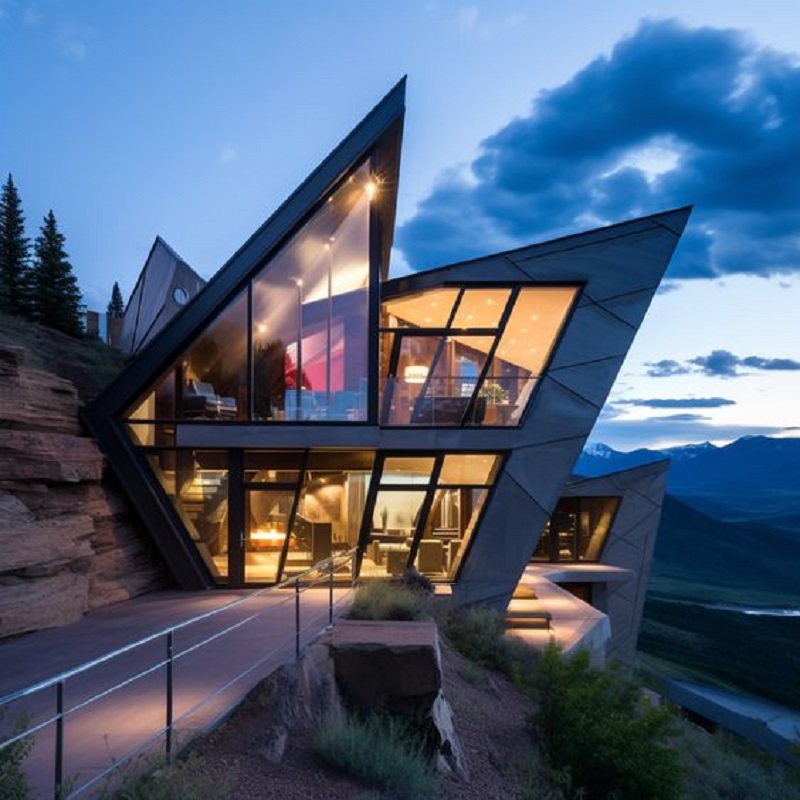
a. Clean Lines and Precision
The cornerstone of houses with modern geometric designs lies in their commitment to clean lines and precision. Straight edges, sharp angles, and a focus on symmetry create a sense of order and sophistication. This precision goes beyond mere aesthetics; it embodies a design philosophy that values simplicity and clarity, making a bold statement in the architectural landscape.
b. Striking Visual Impact
Geometric designs, with their bold shapes and defined patterns, offer a striking visual impact. Whether it’s a cube-inspired structure, a prism-like facade, or a sleek rectangular form, these houses stand out in their uniqueness. The deliberate use of geometry creates a sense of order and balance that captivates the eye and elevates the overall aesthetic appeal of the home.
c. Dynamic Interplay of Forms
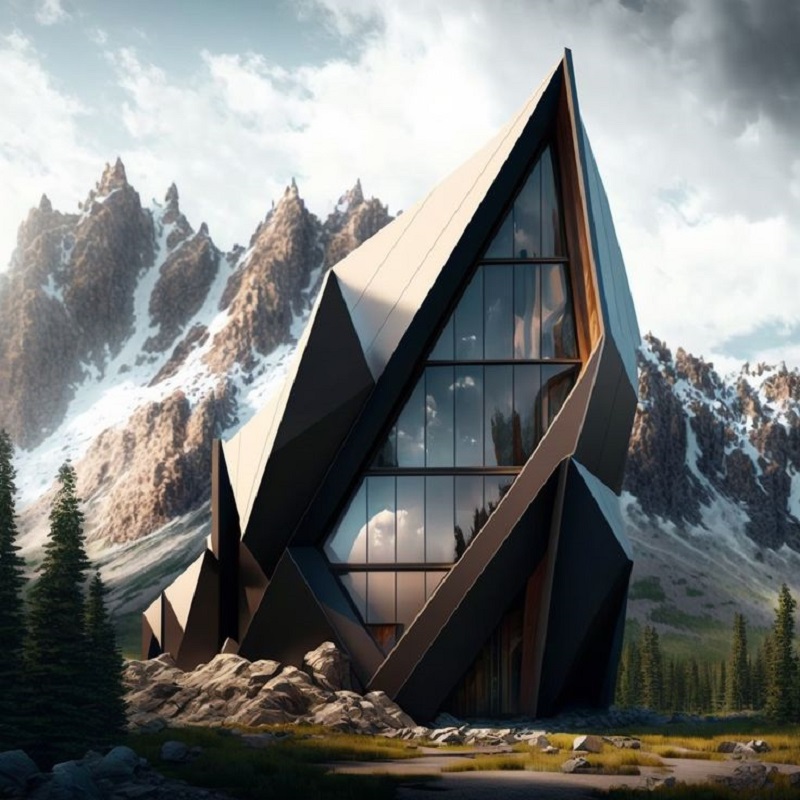
Modern geometric designs allow for a dynamic interplay of forms that transcend traditional architectural norms. Cubes intersecting with spheres, triangles merging into rectangles—the geometric language becomes a canvas for architectural experimentation. This interplay of forms not only adds complexity to the design but also contributes to the spatial dynamics of the interior and exterior spaces.
d. Seamless Integration with Nature
Despite their bold and avant-garde aesthetics, houses with geometric designs often seamlessly integrate with their natural surroundings. Large windows, strategic placement of openings, and thoughtful landscaping create a harmonious relationship between the geometric structure and the environment. The result is a home that stands as a testament to the coexistence of modernity and nature.
2. Practical Benefits of Geometric Designs in Modern Homes
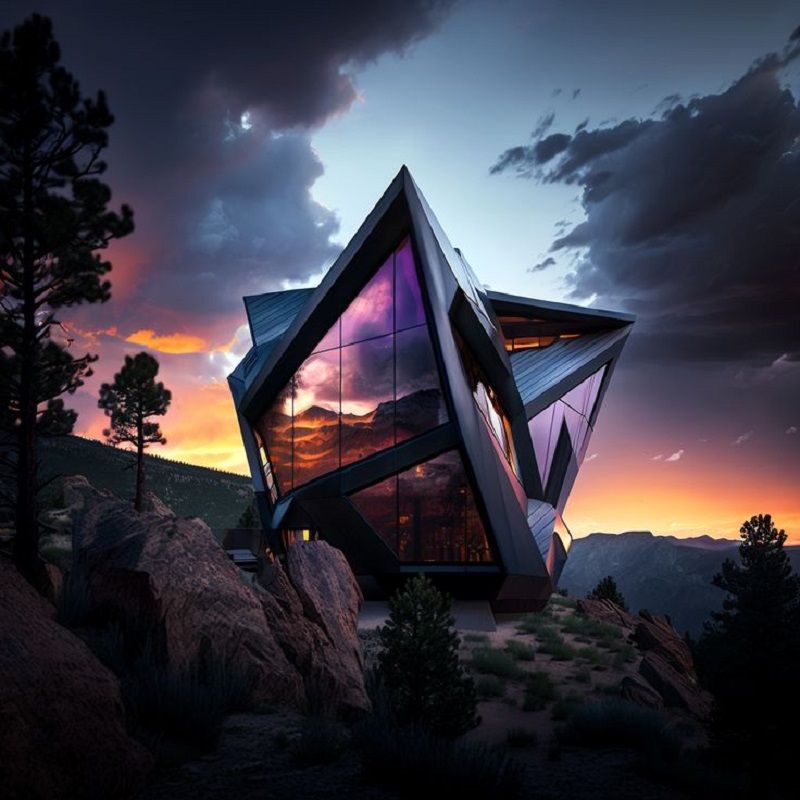
a. Optimal Space Utilization
Geometric designs prioritize optimal space utilization. The clean lines and defined shapes enable architects to maximize every square foot of the structure. This efficiency is not only practical but also aligns with contemporary living preferences, where functionality and purposeful design are paramount.
b. Natural Light Optimization
The strategic placement of windows and openings in geometric designs facilitates the optimization of natural light. Large, geometrically shaped windows allow sunlight to flood the interiors, creating bright and inviting living spaces. This emphasis on natural light not only enhances the visual appeal but also contributes to energy efficiency and a healthier living environment.
c. Ventilation and Airflow Efficiency
Geometric designs often incorporate features that enhance ventilation and airflow. Thoughtfully positioned openings, atriums, and skylights create a natural ventilation system that promotes air circulation throughout the home. This emphasis on airflow not only enhances comfort but also contributes to energy conservation and sustainability.
d. Architectural Adaptability
The adaptability of geometric designs allows for diverse architectural expressions. Whether it’s a compact urban dwelling or a sprawling countryside retreat, the principles of geometric design can be tailored to suit various contexts. This versatility ensures that homeowners can embrace geometric elegance irrespective of the scale or setting of their homes.
3. Home Decoration and Arrangement in Geometric Spaces
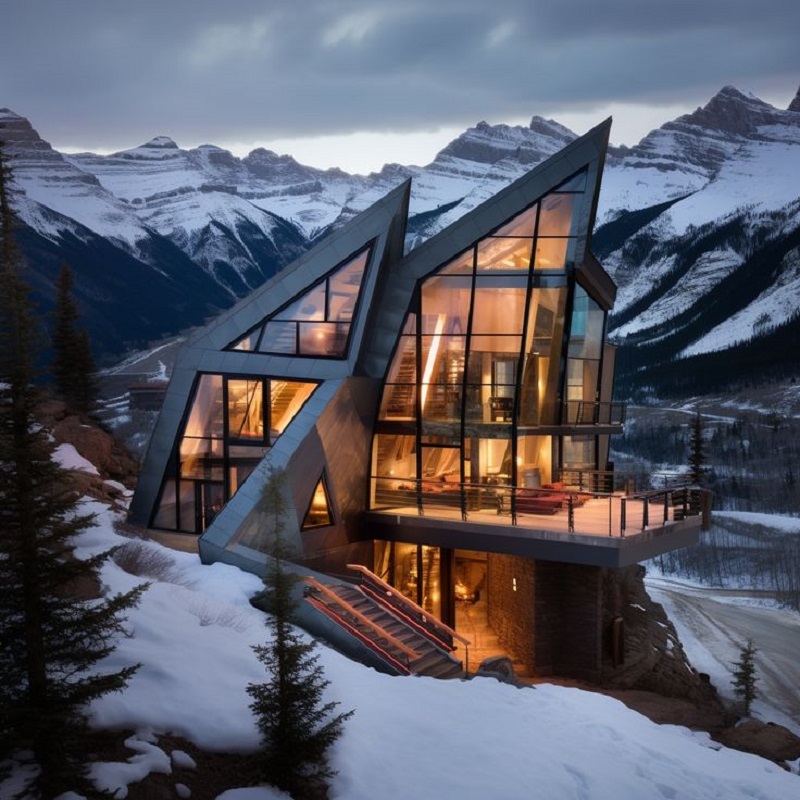
a. Embrace Minimalism in Interior Decor
When decorating homes with geometric designs, embrace minimalism in interior decor. Choose furnishings with clean lines and simple shapes to complement the geometric architecture. Opt for a neutral color palette that allows the architectural geometry to take center stage. Minimalist decor creates a harmonious balance, ensuring that the design elements work together cohesively.
b. Play with Geometric Patterns and Textures
Infuse geometric patterns and textures into the interior design to echo the architectural language of the home. Experiment with geometrically inspired rugs, wall art, and furniture upholstery. The repetition of geometric shapes creates a cohesive visual theme that connects the interior spaces with the external design, fostering a sense of unity and continuity.
c. Use Statement Furniture Pieces
Introduce statement furniture pieces that echo the geometric motifs of the architecture. Consider angular sofas, hexagonal tables, or geometrically inspired lighting fixtures. These statement pieces not only add visual interest but also serve as focal points within the space. Balance these bold elements with more subdued furnishings to maintain a sense of equilibrium in the design.
d. Harmonize Outdoor Spaces
Extend the geometric design principles to outdoor spaces by harmonizing landscaping and exterior decor. Integrate geometrically shaped planters, outdoor furniture, and pathways to create a seamless transition between the indoor and outdoor areas. The geometric language can be extended to the garden or patio, creating an exterior aesthetic that complements the architectural identity of the home.
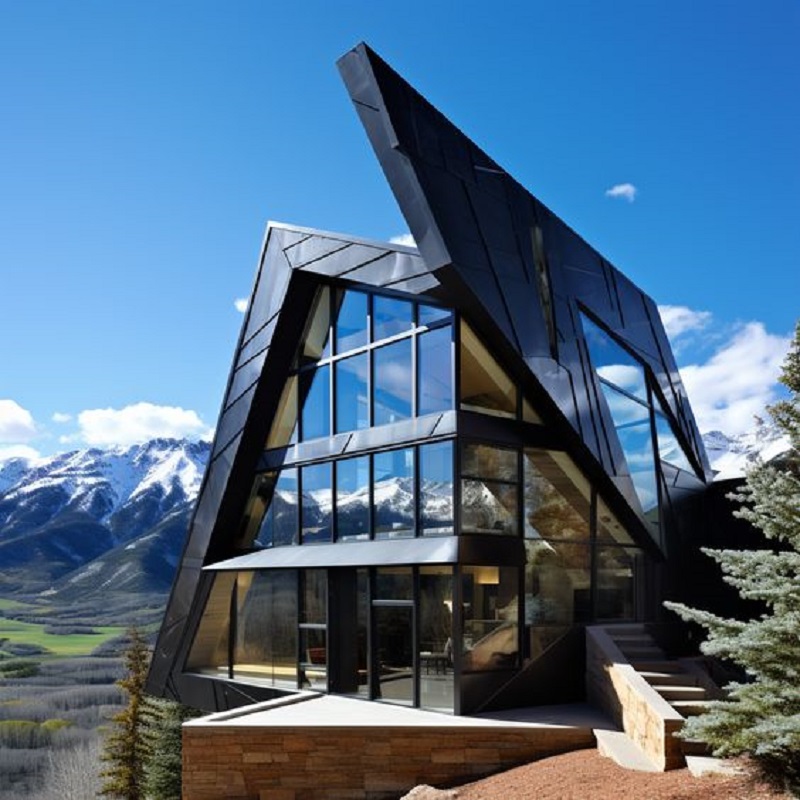
Houses with unique modern geometric designs are more than architectural feats—they are expressions of a design philosophy that values precision, efficiency, and aesthetic allure. From clean lines to striking visual impact, these geometric marvels redefine the concept of home. By understanding the principles behind geometric designs and embracing complementary interior decor, homeowners can transform their living spaces into contemporary havens that resonate with the elegance of modern geometry.



